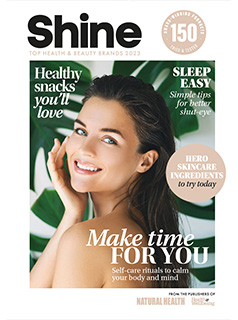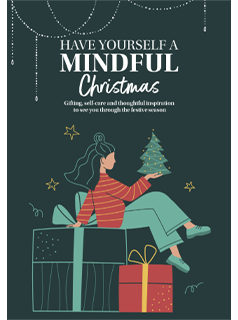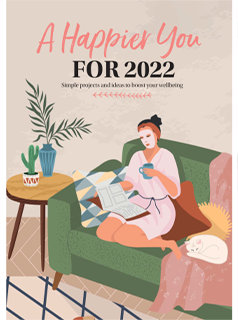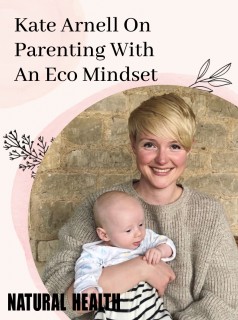NLP is a highly effective form of therapy used for overcoming negative thought patterns and emotional blocks. Liz Alvis looks at what’s involved
NLP is a highly effective form of therapy used for overcoming negative thought patterns and emotional blocks. Liz Alvis looks at what’s involved enhance our potential. It was initially developed in California in the 1970s by a mathematician, Richard Bandler, and a linguist, John Grinder. The pair carried out a study of exceptionally talented people and used the results to gain an understanding of the thinking patterns and behaviours of successful individuals.
NLP is useful on many levels. It is particularly good for overcoming negative thought patterns and emotional blocks. It can also help people to increase their confidence and communication skills, whilst also boosting motivation, positivity and productivity.
There are many different techniques involved in NLP. Here we take a look at some of them:
Reframing
“Reframing is the method of changing the meaning of an experience by changing your perspective,” explains Kim Blackmore of Indigo Eagle (indigoeagle.com ). “The meaning of an experience is also linked to the way that we feel about that experience. So, by reframing, you can easily change the way you feel about something or someone. You can apply a reframe to the way you see yourself, others or situations.” Kim gives the following example: “It’s snowing could mean to an adult that he will have a long, slow commute to work and a feeling of frustration. To a small child it could mean no school, playing in the snow and a feeling of excitement. The adult could reframe the experience and look at it differently. ‘It’s snowing and that means I can try out my new ski jacket, heated gloves and snow boots with a feeling of excitement,’ for example.”
Anchoring
“One of our human tendencies is to anchor,” explains Murielle Maupoint of Live It Ventures (liveit.com ). “This is the process of linking one thing with another and it is how we form connections from phobias to lust. We link our thoughts and feelings to something that is external to us. So, in the case of a phobia, we link a negative feeling and negative thoughts to the item that we fear. In the case of lust we link positive thoughts and feelings to someone or something. Sometimes the links we make are helpful or they can hold us back. The links we make are from our experiences in the moment, which becomes our past in the next moment. In this way, we maintain our past responses into the future. Most relationships that end in trouble do so because one party has formed so many negative anchors they link to the other person that it destroys the relationship. Using NLP, we can work with people to anchor positive thoughts and feelings and de-link negative thoughts and feelings, freeing you up to achieve the things you want in your life.”
Rapport
“Rapport is the foundation of influence,” explains Catherine Jackson of Mind Training Systems (mindtrainingsystems.com ). “Skilfully established deep levels of rapport will ensure all that you communicate is not only fully understood but also accepted uncritically by the other person. Just imagine the positive impact on your relationships, your career, your influence with your children. The ability to create instant rapport with anyone is a skill easily learnt and the cornerstone to success. The majority of our communication is outside of our conscious awareness. Our body language accounts for 55 per cent while our voice tonality is 38 per cent which leaves only 7 per cent for the words that create our influential interaction. NLP is the key to easily establishing deep levels of rapport with techniques to become accomplished in matching and mirroring the other person’s physiology, voice tonality, utilisation of awareness words, their breathing even the key phrases the person may habitually enjoy using. With NLP we work on the principle that people like people that are like them.”
Modelling
Denise Collins, an accredited trainer of NLP (denise-collins.co.uk ) explains: “Do you know someone who does something really well that you would like to be able to do? If you ask, they often don’t know exactly what makes them good. This is because much of the skill is actually held at an unconscious level. NLP modelling is a process of accelerated learning akin to natural learning. Very young children learn by “modelling” patterns of behaviour. They learn by doing, rather than trying to understand how to do. Modelling is key to NLP as the creators modelled exemplars in certain fields and created models that when replicated achieved the same results. Central to modelling is developing an attitude of curiosity and resisting the temptation to interpret. John Grinder, co creator of NLP, describes this as a “know nothing” state. You replicate the patterns of behaviour without judgement, analysis or preconceived ideas and develop skill through action.”
Sub modalities
“95 per cent of what we feel in life is based on how we are communicating with ourselves,” says NLP expert Dominic Knight (dominicknight.co.uk ). “We think in pictures and have a never-ending chatter going on in our minds. Learning how to manipulate what goes on within ourselves gives us incredible flexibility to choose how we respond to life rather then reacting subconsciously. NLP submodalities are simply the manner in which we internally represent the data gathered by our senses of sight, hearing, touch, taste and smell. For each of these modalities, we have distinctions. We could describe a picture in our minds as being black and white or colour; bright or dim. Sounds could be loud or soft. Feelings could be in different parts of the body. Smells could be strong or light. Taste could be sweet, bitter, strong or mild. These finer distinctions are called submodalities and define the qualities of our internal representations. When the manner in which we represent data is different, the experience of it is also changed. So, ultimately, the experience you have of something is not so much due to what you saw, heard or felt, but rather how you re-present it internally, or in other words what your submodalities of those experiences are. We can diminish things like negative emotions and cravings, yet increase sensations such as happiness and love, by learning how we represent things in our own minds. Think of submodalities as blueprints or codes of your experience. When you run a certain submodality, you will feel a particular experience.”
The swish technique
This is a very effective self-help technique which can be used to dissolve a negative memory. Practitioner Janis Hough (janishough.com ) explains how to do it:
Start by visualising a picture of your negative memory, for example a situation which caused you anxiety. Make every detail vivid in your mind and remember how you felt at the time as if it is happening now. Remove it for a moment, yet remember how to create it. Now visualise an image in which you feel relaxed, happy, with no stress or anxiety at all. Again, make this image vivid in your mind and really feel those feelings of happiness and relaxation. Remove this one again, but remember how to create it.
Now, get image one back, the one where you are anxious, and imagine that it is displayed on a TV screen. Now, as you look at that picture, in the bottom left-hand corner visualise a tiny postage stamp-sized picture of your second image, where you feel happy and relaxed.
Now, with a fast, strong motion, ‘swish’ those pictures, so that they change places. Image two is now on the main screen in glorious technicolour with surround sound, filling the screen, whilst image one is small and dark in the corner. Make the ‘swishing’ sound in your mind as you do it, or say it out loud.
Next, blank the screen and open your eyes. Then repeat the process at least five times as quickly as possible, finishing on the desired image. Let the amazing feelings flow through you. As you ‘try’ to get the old image back you will see it is replaced with the new image. On testing most people can’t get the old image and the old feelings back; they simply go into the desired state.























